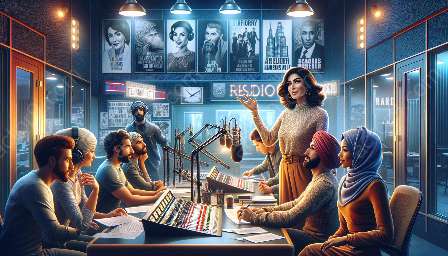In radio drama production, the casting and directing of diverse actors play a pivotal role in ensuring authentic and inclusive storytelling. This topic cluster aims to explore the best practices for casting and directing diverse actors in radio drama and the significance of diversity and representation in this creative medium.
Diversity and Representation in Radio Drama
Radio drama, with its ability to engage and captivate audiences through sound, has the potential to create rich and diverse narratives that reflect the real world. In today's society, the representation of diverse voices and experiences is crucial in fostering inclusivity and understanding. Therefore, it's essential for radio drama producers to prioritize diversity and representation in their productions.
Importance of Authentic Representation
Authentic representation in radio drama involves accurately portraying diverse characters and storylines, as well as depicting the cultural, social, and historical aspects associated with these representations. By doing so, radio dramas can offer audiences a window into different cultural experiences and perspectives, fostering empathy and understanding.
Breaking Stereotypes
Effective casting and directing of diverse actors in radio drama can challenge stereotypes and tropes that have perpetuated in mainstream media. It provides an opportunity to showcase the complexity and richness of diverse communities, moving away from one-dimensional portrayals and embracing the multifaceted nature of human experiences.
Best Practices for Casting Diverse Actors
1. Cultivate an Inclusive Casting Process
Radio drama producers should actively seek out diverse talent by creating inclusive casting calls and actively reaching out to underrepresented communities. This approach ensures that casting opportunities are accessible to a wide range of actors, leading to more diverse and representative casts.
2. Embrace Cultural Consultation
When casting diverse roles, it's important to consult with individuals from the respective cultural backgrounds to ensure that the portrayals are respectful and accurate. This collaborative approach can provide valuable insights and contribute to more authentic performances.
3. Prioritize Intersectionality
Recognizing the intersectionality of identities is essential when casting diverse actors. Individuals embody multiple facets of identity, and acknowledging this intersectionality leads to a more nuanced and inclusive representation of diverse experiences.
Directing Diverse Actors with Sensitivity
1. Establish Open Communication
Creating an environment where actors feel comfortable expressing their perspectives and concerns is crucial. Directors should encourage open dialogue and actively listen to the experiences and insights of their diverse cast members.
2. Provide Historical Context
When directing diverse actors in roles that involve cultural or historical references, it's important to provide them with the necessary historical context and background information. This empowers actors to approach their characters with a deeper understanding of the cultural nuances embedded in the script.
3. Avoid Stereotypical Directives
Directors should be mindful of their language and directives, steering clear of reinforcing stereotypes or making assumptions based on cultural backgrounds. Instead, they should focus on guiding actors to explore the authenticity and complexity of their characters.
Inclusive Storytelling Through Radio Drama
By implementing these best practices for casting and directing diverse actors, radio drama producers can create compelling and authentic narratives that resonate with diverse audiences. Embracing diversity and representation in radio drama production not only enriches the creative landscape but also contributes to a more inclusive and empathetic society.






















